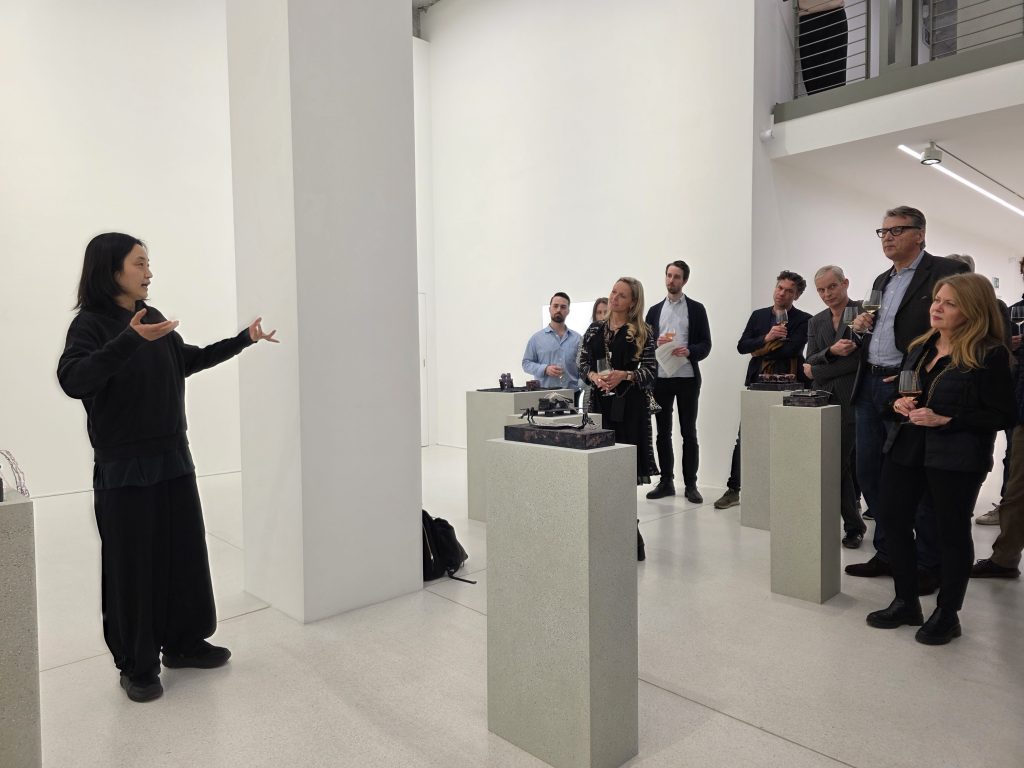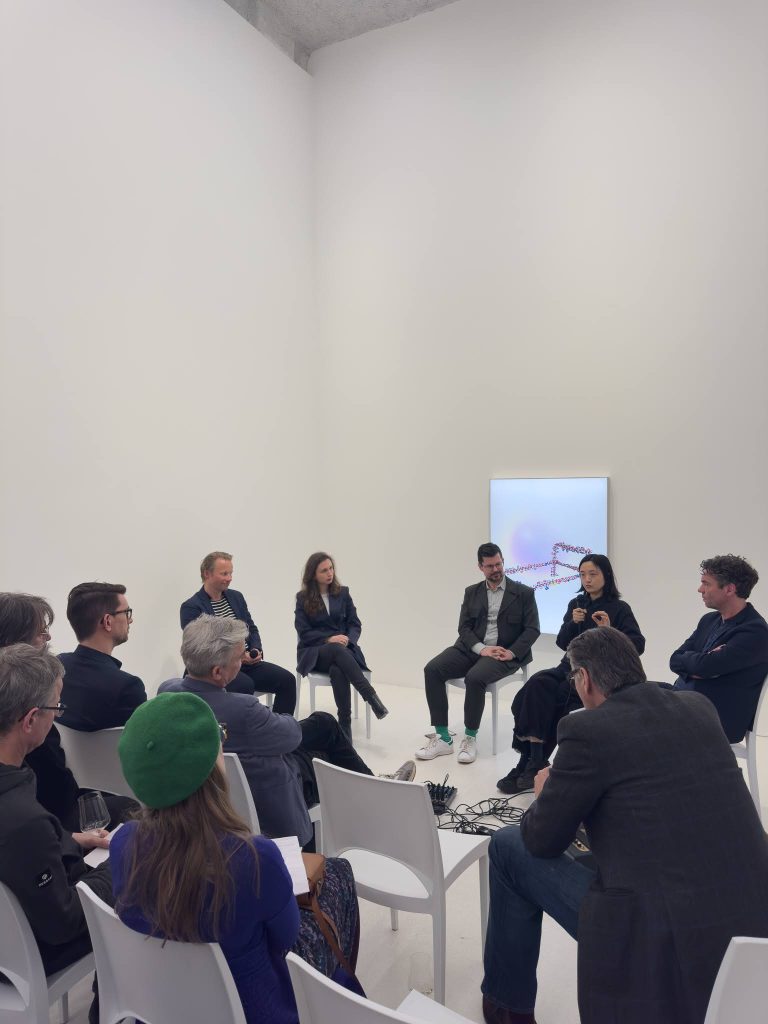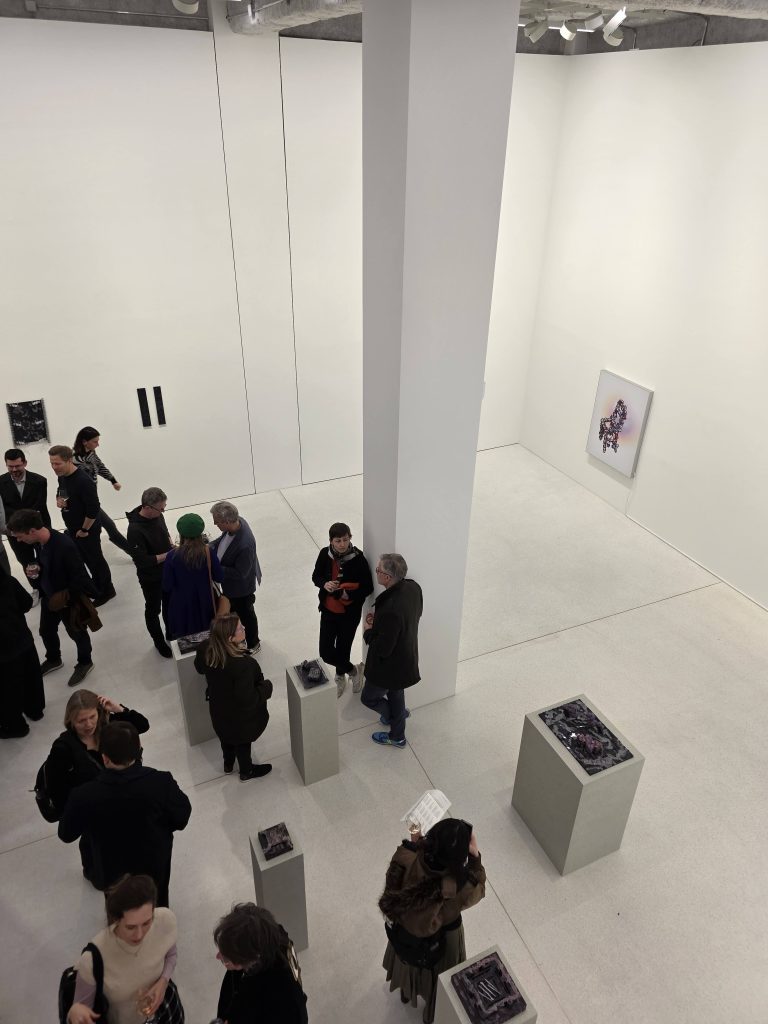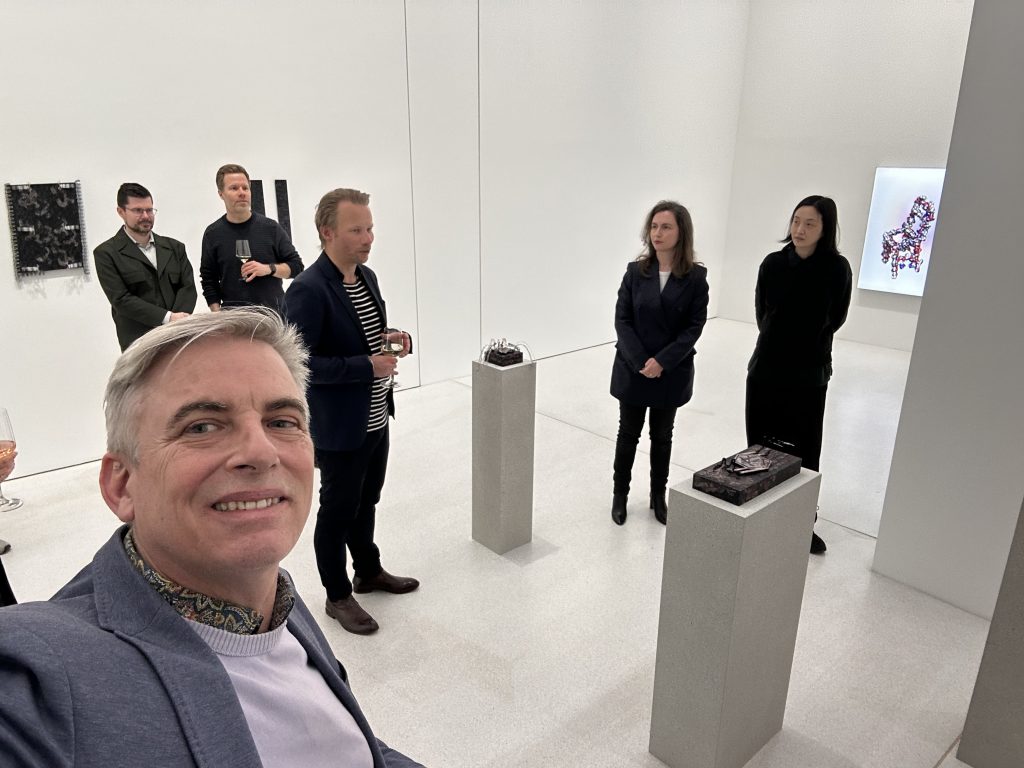Inspiration Salon: Art & Science

Sources of Mutual Inspiration or a Dichotomy?
Art Tour & Panel Discussion
Ran Zhang
(Artist)
Prof. Dr. Christian Hackenberger
(Biomolecule Modification & Delivery, Leibniz Research Institute for Molecular Pharmacology)
Dr. Martin Schwemmle
(Founder & CEO, The Future Company)
in conversation with
Sorana Serban-Chiorean
(Associate Director, Galeria Plan B)
Joerg Geier
(ANSC)
Wenesday, 12 March 2025
Galeria Plan B
Strausberger Platz 1, 10243 Berlin















ABOUT THIS SALON
Art and science are often viewed as opposing forces—one driven by intuition and emotional resonance, the other by logic and empirical rigor. While art is seen as an exploration of subjectivity, embracing ambiguity and personal interpretation, science seeks to uncover objective truths through observation, experimentation, and structured methodology. However, these two fields are far from separate; rather, they are deeply intertwined, each offering unique ways of understanding and interpreting the world. Both artists and scientists are, at their core, seekers of knowledge. They ask profound questions, push boundaries, and challenge existing paradigms. Art has the power to visualize complex scientific ideas, making them more accessible, engaging, and emotionally resonant. Meanwhile, science provides artists with new tools, materials, and perspectives, allowing for groundbreaking innovations in artistic practice.
But how can art & science actively inspire one another? How can they foster new ways of thinking, feeling, and seeing, ultimately leading to novel discoveries and creative breakthroughs? Inspired by the artwork of Ran Zhang, we will delve into these questions, examining how artistic and scientific disciplines intersect and inform each other and what role nature plays. What can the methodologies of art and biology teach us about perception, observation, and discovery? How can we use all of our senses – not just sight– to engage with the world around us? How does the study of life serve as a metaphor for our own experiences, identities, and evolving relationships with the natural world? How has the natural environment historically influenced both artistic expression and scientific discovery? How does nature serve as a source of both inspiration and inquiry? Can artistic imagination open new pathways for scientific thought?
By embracing this dialogue, we may be able to uncover new ways to engage with the world, bridging the divide between the creative and the analytical, the intuitive and the empirical.
Statements during the discussion:
Joerg concluded with a statement that the one word that links all of the panelists work is curiosity. All the panelists are driven by it and have gone deep in their respective field of work because of it.
Joerg, in his welcome, introduced the speakers and thanked all of them and Galeria Plan B for the collaboration.
In her opening, Sorana elaborated on the works of Leonardo da Vinci and Albert Einstein and how they were good examples for the integration of artistic and scientific thinking.
Ran Zhang pointed out that she is largely self-taught. She generally explores topics in fine detail and gets inspired from different sources, including science. She spent a lot of time with a laser cutter to work on her 3D objects. Ran had an aha moment when, some time ago, she investigated how her eye was made up of, basically not only seeing but observing what seeing looks like from the perspective of biology. This inspired her. Ran also noted that her upbringing in China influenced the way she is looking at the world. While the German or Dutch culture – where she has spent more than a decade – go right to the core, the Chinese culture usually spends more time at the periphery and from there moves forward. Ran’s artistic work gives a form to scientific phenomena.
Martin Schwemmle quoted philosopher Martin Heidegger when looking at a piece of clay as a means of self-reflection and using the arts as a way to improve business processes. He also compared innovation processes with the arts, namely young artists with incremental innovation and old masters with breakthrough or radical innovation based on the fact that old master painters often tried out something new and daring that may be missing with young artists some of the time.
Christian Hackenberger indicated that both interdisciplinary work and very focused and deep research have their justification. Sometimes, it takes a long time to come up with new insights. Ran’s work inspired him because her work’s reminiscence of scientific objects.
Questions from the moderators and audience referred to challenges and opportunities to scientists and artists during the COVID-19 pandemic, the importance of morality in science, as well as the importance of systems thinking in scientific work.
| Ran Zhang studied at the Fine Arts Dept. of Gerrit Rietveld Academie and the Rijksakademie van Beeldende Kunsten in Amsterdam, The Netherlands, graduating in 2013. She received multiple prizes like the Danfoss Art Award in 2007 and substantial funding through the Mondriaan Fonds. She was a resident at the Rijksakademie van Beeldende Kunsten & Asia Culture Center in Gwangju, S. Korea. |
| Prof. Dr. Christian Hackenberger studied chemistry in Freiburg, Madison/Wisconsin, Aachen and Boston. Since 2012 he is Leibniz-Humboldt Professor of Chemical Biology at Humboldt University and the Leibniz Research Institute for Molecular Pharmacology. He founded Tubulis GmbH, a company developing antibody-based therapeutics against cancer. |
| Dr. Martin Schwemmle is a future skills expert, keynote speaker, author, and CEO of The Future Company. With a background in business and innovation research, he explores strategy, innovation, and transformation. A jury member for the Literaturpreis der deutschen Wirtschaft, he is also a passionate singer, designer, and storyteller. |
Partner: